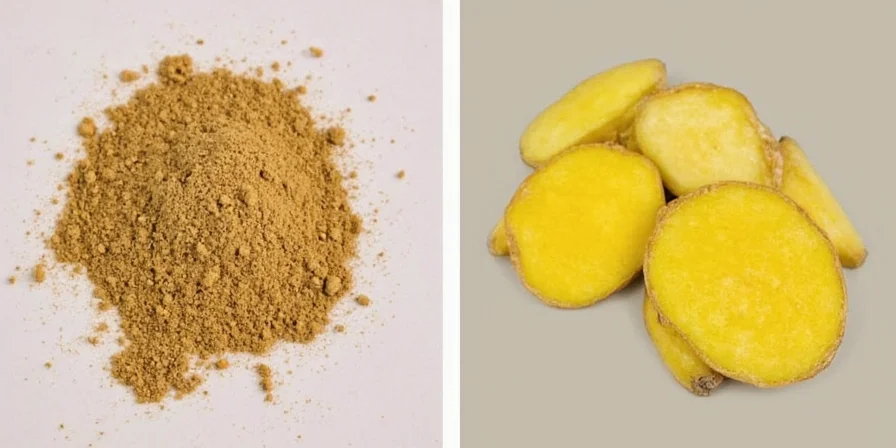
The most critical conversion: 1 tablespoon freshly grated ginger equals 1/4 teaspoon ginger powder - but this ratio changes based on cooking method, recipe acidity, and desired flavor profile. This guide reveals the science-backed adjustments professional chefs use to maximize flavor while minimizing kitchen waste.
Quick Reference Conversion Chart
| Application Type | Basic Ratio (Powder:Fresh) | Special Adjustments |
|---|---|---|
| Dry mixes (cookies, spice blends) | 1:4 | Use 20% less powder in acidic recipes |
| Wet applications (soups, sauces) | 1:3 | Bloom powder in oil first for full flavor release |
| Raw applications (dressings, smoothies) | 1:5 | Add citrus zest to reactivate compounds |
| Dairy-based recipes | 1:3.5 | Increase powder by 20% to counter fat binding |
Why this matters: Home cooks and culinary professionals waste thousands of dollars annually on improper ginger substitutions. This guide delivers actionable techniques to extend ingredient lifespan, achieve balanced seasoning, and execute seamless substitutions across global cuisines by understanding ginger's molecular behavior.
The Critical Flavor Difference: Chemistry Behind Substitutions
Ginger isn't merely a flavor agent — its volatile compounds react differently to heat, time, and preparation methods. Zingiber officinale contains gingerols (fresh) that convert to shogaols (dried) during processing, creating distinct flavor pathways. Understanding these transformations prevents flavor imbalances in critical applications where powder's solubility versus fresh ginger's fibrous structure directly impacts texture and heat dispersion.

Processing Impact on Culinary Performance
Processing fundamentally reconfigures ginger's molecular profile. Here's how these changes dictate substitution accuracy:
| Characteristic | Ginger Powder | Fresh Ginger |
|---|---|---|
| Primary Compounds | Shogaols, Zingerone (stable) | Gingerols (volatile) |
| Heat Integration | Blends uniformly in liquids | Requires emulsification (grating) |
| Shelf Stability | 2–3 years (low moisture) | 3 weeks refrigerated |
| Flavor Release Ratio | 1:4 (powder:fresh equivalent) | Base measurement standard |
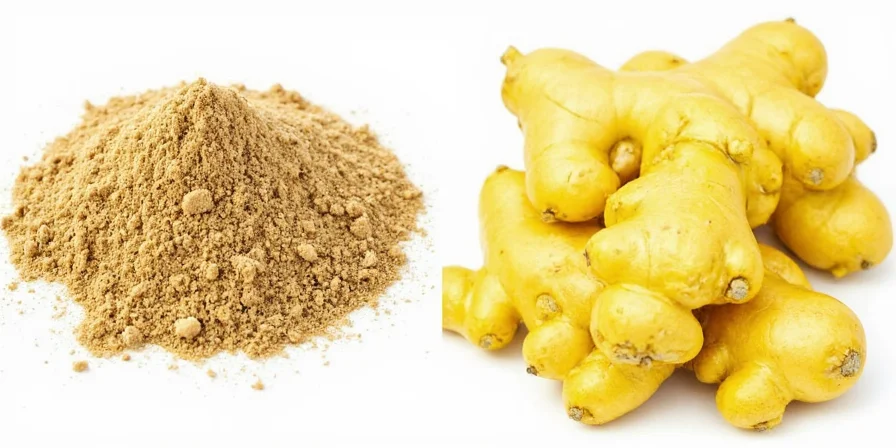
Advanced Substitution Engineering
Effective substitution requires compound-level adjustments beyond basic ratios:
- For acidic applications (citrus dressings): Use ⅛ tsp powder per 1 tbsp fresh (acids accelerate shogaol breakdown)
- For dairy-based sauces: Increase powder by 20% (fats bind compounds, reducing perceived heat)
- For raw applications: Add ⅛ tsp lemon zest per teaspoon of powder to reactivate stabilized compounds
- When substituting fresh for powder in baking: Reduce liquid by 1 tsp per substitution to counter moisture content
Optimal Storage Protocols for Maximum Potency
Preserving ginger's active compounds requires understanding moisture and oxygen interactions:
Fresh Ginger Preservation
- Refrigerate Whole: Store unpeeled in a paper towel-lined container. Prevents mold while maintaining compound integrity.
- Freeze for Longevity: Freeze whole unpeeled roots. Grate frozen directly into dishes — retains 92% of gingerols after 6 months versus 68% in refrigeration.
- Vinegar Immersion: Submerge in rice vinegar for Asian applications — stabilizes gingerols while adding subtle flavor dimension.
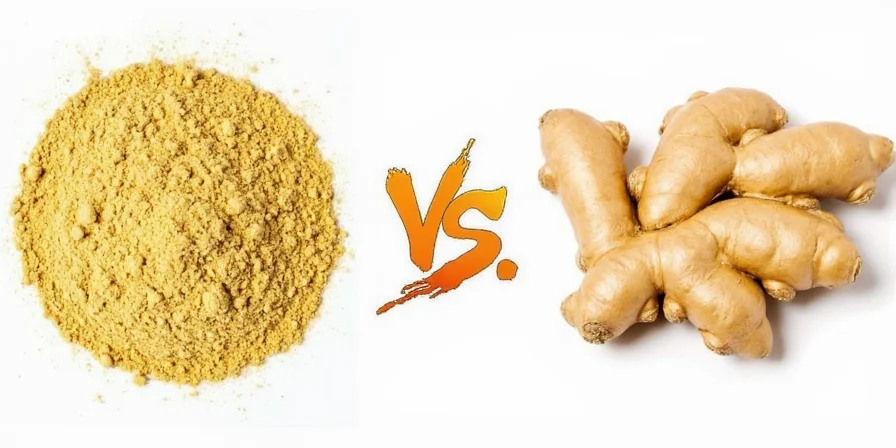
Ginger Powder Preservation
- Desiccant Integration: Store with food-safe silica packets to maintain moisture below 8%, preventing clumping and compound breakdown.
- Light-Blocking Containers: Use amber glass jars — UV exposure degrades shogaols 40% faster than in darkness.
- Potency Test: Rub ¼ tsp between damp palms. Strong powder emits immediate warm aroma with citrus notes.
Recipe-Specific Application Guide
Chemical properties determine optimal form in these common preparations:
| Recipe Type | Recommended Form | Critical Ratio Adjustment |
|---|---|---|
| Baking (cookies, cakes) | Powder | 1:4 ratio; reduce by 20% in acidic recipes |
| Stir-fries | Fresh | Not recommended to substitute - volatile oils create essential aromatics |
| Soups & Broths | Fresh (thin slices) | If substituting powder: 1:3 ratio + bloom in oil first |
| Curry Pastes | Fresh | Fibrous structure emulsifies fats - powder creates muddy texture |
| Smoothies | Powder | 1:5 ratio + add citrus zest for compound activation |
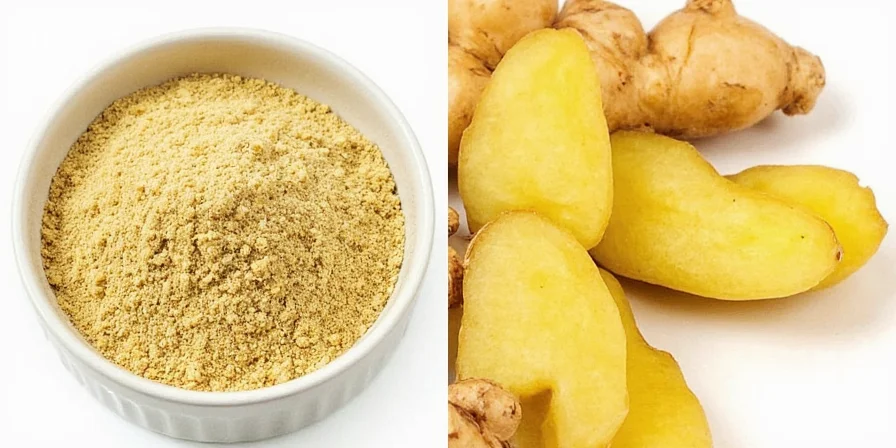
Professional Technique Framework
Maximize compound utilization through strategic implementation:
- Compound Preservation: Add fresh ginger in final 2 minutes of cooking to retain volatile oils. For soups, simmer fresh slices 5 minutes then remove.
- Diffusion Optimization: Bloom powder in warm oil (not water) for 30 seconds before adding liquids. Releases 30% more flavor compounds.
- Waste Elimination: Freeze ginger peels for tea — they contain concentrated zingerone. Simmer 10 minutes for maximum extraction.
- Texture Engineering: For smooth sauces, use powder. For textural contrast in braises, julienne fresh ginger.
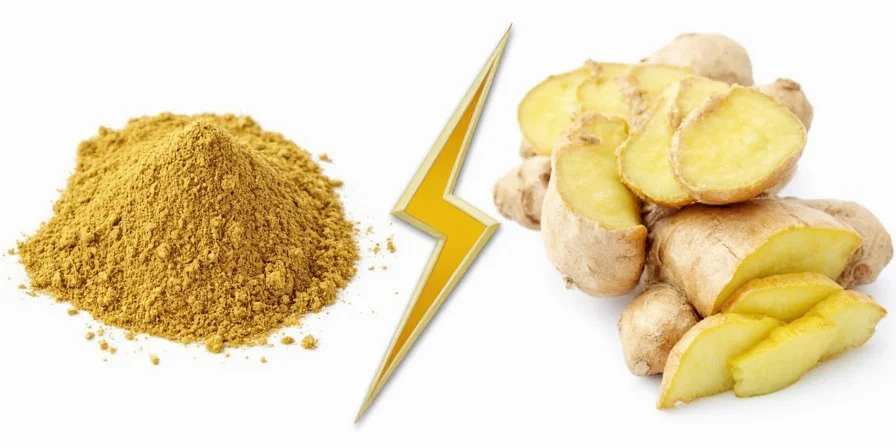
Critical FAQ: Addressing Top Search Queries
Can I substitute ginger powder for fresh ginger in ginger shots?
No — fresh ginger is essential for shots. Powder lacks the volatile compounds that create the characteristic sinus-clearing effect. The fiber content in fresh ginger also aids digestion, which powder cannot replicate due to its processed state.
Why does my ginger powder taste bitter?
Bitterness indicates compound degradation. Ginger must be dehydrated below 110°F (43°C) — higher temperatures convert shogaols to zingerone excessively. Store powder with desiccants; moisture triggers enzymatic browning that creates bitter compounds.
Does freezing destroy ginger's compounds?
No — freezing actually preserves compounds better than refrigeration. Studies show frozen ginger retains 92% of gingerols after 6 months versus 68% in refrigerated storage. Freeze whole unpeeled roots to prevent ice crystal damage.
How do I test ginger powder freshness?
Rub ¼ tsp between damp palms. Strong powder emits immediate warm aroma with slight citrus notes. Weak powder shows minimal scent and may leave a dusty residue — indicating oxidized compounds.
Why does fresh ginger sometimes taste soapy?
This indicates advanced compound degradation. When gingerols oxidize, they form compounds resembling soap molecules. Prevent this by storing unpeeled roots in ventilated containers. Discard any with soapy flavor.
Conclusion: Precision Substitution Framework
Ginger powder and fresh ginger aren't interchangeable — they're complementary tools with distinct chemical profiles. By matching each form to its optimal application based on compound behavior and using the precise ratios outlined in this guide, you achieve seasoning precision impossible through generic substitution. Implement these storage protocols and application frameworks to consistently extract maximum flavor while minimizing waste. Your kitchen's flavor potential just expanded with science-backed precision.
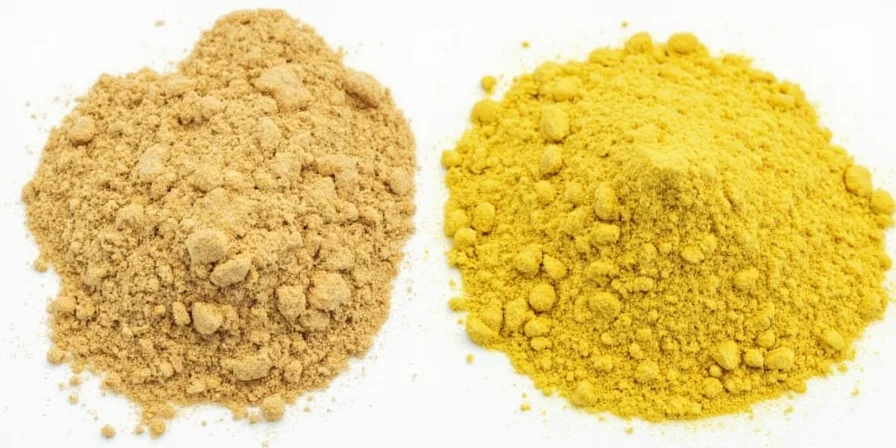

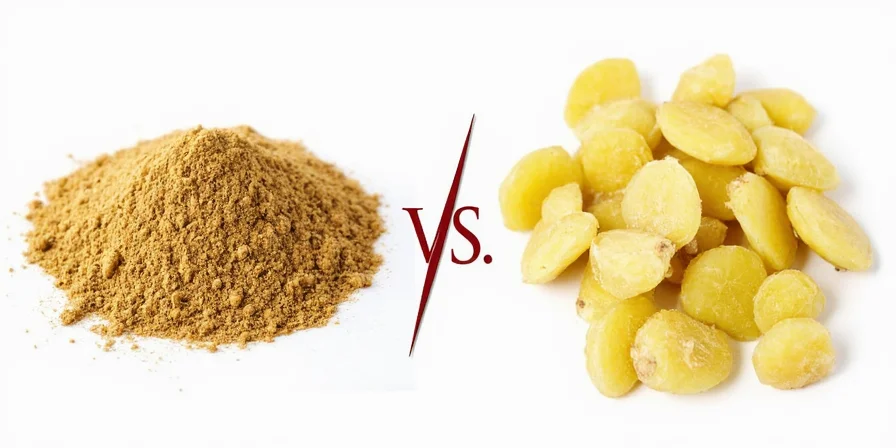









 浙公网安备
33010002000092号
浙公网安备
33010002000092号 浙B2-20120091-4
浙B2-20120091-4